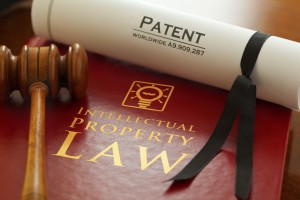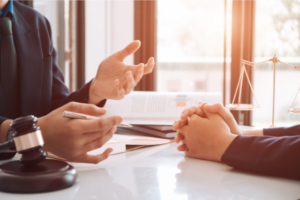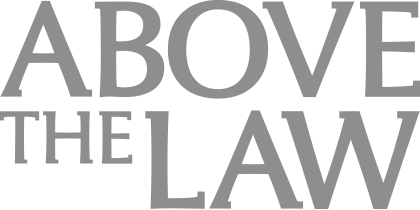3 Takeaways From A Patent Pretrial Order In Google v. Sonos Case
The Google v. Sonos trial might not see the case go to the jury for verdict until the end of May.
 The eyes of the patent world — and many on Wall Street as well — are focused on Judge William Alsup’s downtown San Francisco courtroom. The reason for all the fuss? The long-awaited patent trial between Google and its former friend turned sworn combatant, Sonos. While the parties have already gone all the way in the ITC, as well as in a host of IPRs, this is the first district court trial in their long-running patent dispute. As such, it is the first chance for Sonos to demonstrate that its patents have the ability to convince a jury to award damages against Google. Considering that my most recent column on the dispute ran in 2020, I definitely don’t expect readers to remember any of the points I made about Sonos’s claims. (In fact, I don’t remember what I even wrote back then, so I’ll take a minute to refresh my recollection and maybe pull out a quote or two to reorient us. Apologies for the wall-breaking colloquy.) If anything, the passage of time should be a potent reminder that IP owner expectations that a case will resolve favorably can sometimes be overly optimistic, particularly when a defendant is as schooled in the patent defense arts as Google is.
The eyes of the patent world — and many on Wall Street as well — are focused on Judge William Alsup’s downtown San Francisco courtroom. The reason for all the fuss? The long-awaited patent trial between Google and its former friend turned sworn combatant, Sonos. While the parties have already gone all the way in the ITC, as well as in a host of IPRs, this is the first district court trial in their long-running patent dispute. As such, it is the first chance for Sonos to demonstrate that its patents have the ability to convince a jury to award damages against Google. Considering that my most recent column on the dispute ran in 2020, I definitely don’t expect readers to remember any of the points I made about Sonos’s claims. (In fact, I don’t remember what I even wrote back then, so I’ll take a minute to refresh my recollection and maybe pull out a quote or two to reorient us. Apologies for the wall-breaking colloquy.) If anything, the passage of time should be a potent reminder that IP owner expectations that a case will resolve favorably can sometimes be overly optimistic, particularly when a defendant is as schooled in the patent defense arts as Google is.
Now that I have had a chance to review it, I can see that my 2020 column focused on the venue machinations that landed Google and Sonos before Alsup in the first place. Not that they got off to a good start, however, as the court at the time reserved judgment on whether “Sonos is just as guilty of forum shopping here as Google.” Despite the court’s oft-expressed frustrations with the case, the matter did progress over the years, including through Alsup’s unique patent showdown process. Starting this week, we have the next big step in the process, with a trial commencing before six jurors and two alternates over a series of staggered morning sessions that might not see the case go to the jury for verdict until the end of May. While those following the case have undoubtedly been impressed by its various twists and turns, as well as Alsup’s adept steering of the case to trial in a manageable setting while also nudging the parties to find a way to settle out of court, for purposes of this column I’d like to focus on three takeaways we can glean from the final pretrial order in a case.
First, as with most pretrial orders, the one entered by Alsup on May 4 serves as a potent reminder of how streamlined patent cases can become heading into trial. Not only in terms of what specific claims from the (remaining) asserted patents will be tried, but even with respect to the types of evidence that a party may choose to put on before the jury. Take Google’s derivation defense, as an example. Heading into trial — even as late as the joint pretrial statement — the defense was the subject of dispute and briefing. At least until Google indicated it was willing to drop the defense so as to narrow the issues for trial, prompting Alsup to declare that he “will hold Google to” that decision.
As another example, Sonos moved in limine to head off potential arguments by Google before the jury as to the propriety of Sonos’s patent prosecution efforts. Here too, Google indicated that Sonos’s motion was based on “arguments that Google does not intend to raise.” Taken together, these examples illustrate that the need for efficiency at trial can act like a megadose of case-slimming Ozempic that melts away threatened, but bloated, evidentiary presentations.
The need for efficiency at trial is always acute in patent cases, which brings us to our second takeaway. Considering the fact that Sonos’s CEO has testified about the importance of his company’s claims against Google before Congress, with Google not shying away from matching any public escalation by Sonos in kind, you would think that a lay jury would be in for a long and impassioned round of opening statements from both sides. Not in Alsup’s courtroom, where the court allocated a mere 35 minutes a side for opening statements, as well as a total of just 14 hours per side to present “all of the issues to be tried in this case.”
Those of us that have tried cases in Delaware, or Texas, know that such aggressive timing considerations are not unusual at all for a patent case, irrespective of the case’s value. Still, in my experience, clients and investors that are invested in the case outcome are often surprised by how little time the parties have to put on the complicated multi-issue drama that is the typical patent trial. The allotted trial times are another reflection of how busy federal trial court dockets are, with each minute a precious commodity.
Lastly, it is hard not to end off our consideration of the pretrial order without taking notice of how prominent a place damages issues occupy in the document. True, the potential value of this one case for Sonos was described by Google as being cut to $90 million from $3 billion. But even that lower number would still provide a nice headline boost to Sonos if it were successful at trial, on top of the validation of the value of its patent portfolio at trial that a jury verdict also bestows. The road for Sonos on the damages journey, however, remains a treacherous one, with Alsup expressing his “serious questions about Sonos’s damages theory.”
Sponsored

Law Firm Business Development Is More Than Relationship Building

Curbing Client And Talent Loss With Productivity Tech


Law Firm Business Development Is More Than Relationship Building
The court’s reservations about the soundness of its damages position are of course not ideal for Sonos, but even that uncertainty was alleviated somewhat by Alsup’s granting of a key motion in limine for Sonos on the issue of whether Google’s damages expert “should be precluded from testifying regarding the resulting licensing settlement proposal between the parties and term sheet.” While we are left to speculate as to what this case could have settled for had all the litigation wrangling — and costs in terms of legal fees, business disruption, and litigation expenses — been avoided, it was important to Sonos that the potential prejudice of the jury hearing the prelitigation settlement demand be avoided. Alsup was accommodating on that front, but expect that more impactful decisions will be issued from his desk before this patent saga’s closing chapters are written. Until that day, let the verdict, or settlement, watch begin.
Please feel free to send comments or questions to me at [email protected] or via Twitter: @gkroub. Any topic suggestions or thoughts are most welcome.
Gaston Kroub lives in Brooklyn and is a founding partner of Kroub, Silbersher & Kolmykov PLLC, an intellectual property litigation boutique, and Markman Advisors LLC, a leading consultancy on patent issues for the investment community. Gaston’s practice focuses on intellectual property litigation and related counseling, with a strong focus on patent matters. You can reach him at [email protected] or follow him on Twitter: @gkroub.
Sponsored

Generative AI at Work: Boosting e-Discovery Efficiency for Corporate Legal Teams








